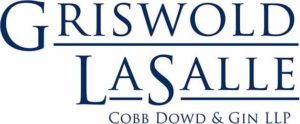California Mask Requirements
We have received many questions about the Governor’s new requirements for masks. Here is a summary of the guidance from CDPH.
The California Department of Public Health issued the following requirements for all Californians on June 18, 2020. It affects everyone in every county whenever you are in the following situations because they are considered “high risk”:
- Inside of, or in line to enter, any indoor public space (anywhere that is open to the public for goods or services) – think home improvement stores, malls, libraries, grocery stores. Note: state guidelines exempt school and childcare centers.
- Obtaining services from the healthcare sector – think hospitals, pharmacies, clinics, labs, dentist
- Waiting for or riding on public transportation – think bus, taxi, Uber, Lyft
- At work when:
- Interacting in-person with any member of the public — think meetings, customer walk-ins, deliveries;
- Working in any space visited by members of the public, regardless of whether anyone from the public is present at the time – think lobbies, waiting rooms
- Working in any space where food is prepared or packaged for sale or distribution to others – think meal prep at restaurants;
- Working in or walking through common areas – think hallways, stairways, elevators, and parking facilities;
- Whenever you cannot physically distance
- While outdoors in public spaces when maintaining a physical distance of 6 feet from persons who are not members of the same household or residence is not feasible.
Exceptions:
- Persons age two years or under because of the risk of suffocation.
- At a restaurant or other establishment that offers food or beverage service, while they are eating or drinking, provided you are socially distanced from persons who are not members of the same household or residence.
- When engaged in outdoor work or recreation such as swimming, walking, hiking, bicycling, or running, when alone or with household members, and socially distanced.
- Persons with a medical condition, mental health condition, or disability that prevents wearing a face covering.
- The hearing impaired, or communicating with a person who is hearing impaired, where the ability to see the mouth is essential for communication.
- When wearing a face covering would create a risk to the person related to their work, as determined by local, state, or federal regulators or workplace safety guidelines.
- Persons who are obtaining a service for which temporary removal of the face covering is necessary to perform the service.
Persons exempted from wearing a face covering due to a medical condition who are employed in a job involving regular contact with others should wear a non-restrictive alternative, such as a face shield with a drape on the bottom edge, as long as their condition permits it.

